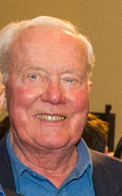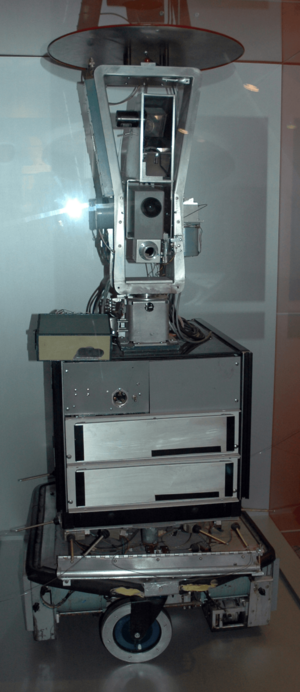Nils John Nilsson facts for kids
Quick facts for kids
Nils John Nilsson
|
|
|---|---|

Nilsson in 2017
|
|
| Born | February 6, 1933 |
| Died | April 23, 2019 (aged 86) |
| Nationality | American |
| Alma mater | Stanford University |
| Scientific career | |
| Fields | Artificial intelligence |
| Institutions | SRI International Stanford University |
| Doctoral advisor | Willis Harman |
| Doctoral students | Leslie P. Kaelbling |
Nils John Nilsson (February 6, 1933 – April 23, 2019) was an American computer scientist. He was one of the first researchers in the field of artificial intelligence (AI). He was a professor of computer science at Stanford University until he retired. Nilsson is especially known for his work on how computers find information, plan actions, understand knowledge, and control robots.
Contents
Early Life and Education
Nils Nilsson was born in Saginaw, Michigan, in 1933. He earned his Ph.D. from Stanford University in 1958. He spent a large part of his career at SRI International, which is a private research lab.
From 1958 to 1961, Nilsson served as a lieutenant in the U.S. Air Force. He was stationed at the Rome Air Development Center in Rome, New York.
Career in Artificial Intelligence
Working at SRI International
Starting in 1966, Nils Nilsson, along with Charles A. Rosen and Bertram Raphael, led a team that built Shakey. Shakey was a special robot that could understand its surroundings using sensors. It could then "think" about its environment to make a plan of action. Finally, it would carry out that plan by sending commands to its motors.
This way of thinking about robots was very important in AI. Nilsson's group was the first to create a complete robot that could use logical thinking to decide its actions. They also invented the A* search algorithm, which helps computers find the best path or solution. They also created the STRIPS planner. This tool helps robots make step-by-step plans. Many planning tools used today are still based on STRIPS.
Teaching at Stanford University
In 1985, Nilsson became a professor in the Computer Science Department at Stanford University. He was the head of the department from 1985 to 1990. He was also the Kumagai Professor of Engineering until he retired.
Nilsson was the fourth President of the AAAI (Association for the Advancement of Artificial Intelligence). He also wrote or co-authored several books about AI. Two of his most famous books are Principles of Artificial Intelligence (1982) and Logical Foundations of Artificial Intelligence (1987).
Awards and Personal Life
Awards and Memberships
In 2011, Nils Nilsson was recognized for his important work in AI. He was inducted into the AI's Hall of Fame by IEEE Intelligent Systems. This honor is given for major contributions to artificial intelligence and intelligent systems.
Personal Life
On July 19, 1958, Nilsson married Karen Braucht. They had two children together. Karen passed away in 1991. In 1992, he married Grace Abbott, who had four children from a previous marriage.
Nils Nilsson died on April 23, 2019, at his home in Medford, Oregon. He was 86 years old.
See also
- Morgan Kaufmann Publishers
- In Spanish: Nils John Nilsson for kids


